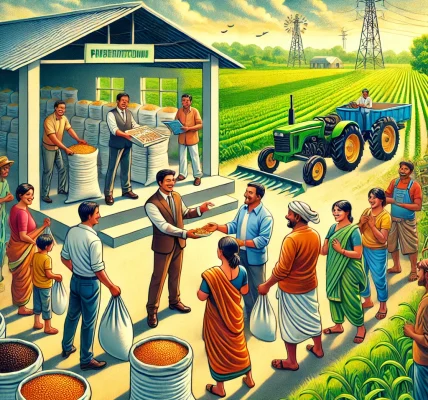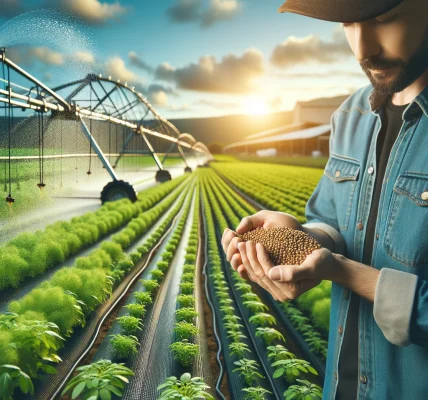Government Schemes Supporting Farmers in Drought-Prone and Flood-Affected Areas
Introduction
India’s agriculture sector is highly vulnerable to climate-related challenges, especially droughts and floods. These natural disasters cause severe crop losses, financial distress, and food insecurity for farmers. Recognizing this, the Government of India has introduced several schemes to provide financial assistance, insurance, irrigation support, and disaster relief to farmers in affected regions.
This blog provides an in-depth look at government schemes that support farmers in drought-prone and flood-affected areas, helping them recover from losses and build resilience against future climate risks.
Impact of Droughts and Floods on Indian Agriculture
1. Crop Loss & Reduced Productivity
- Droughts lead to water scarcity, reducing crop yield.
- Floods cause soil erosion, destroying standing crops.
2. Financial Distress for Farmers
- High input costs with low returns.
- Increased debt burden due to crop failure.
3. Soil & Water Degradation
- Loss of topsoil nutrients due to floods.
- Water table depletion in drought-prone regions.
4. Displacement & Migration
- Floods force farmers to relocate.
- Lack of water for irrigation pushes farmers towards urban migration.
Government Schemes for Drought-Prone & Flood-Affected Farmers
1. Pradhan Mantri Fasal Bima Yojana (PMFBY)
- Objective: Crop insurance for farmers against droughts, floods, pests, and diseases.
- Benefits:
- Compensation for crop loss due to natural calamities.
- Low premium rates: 2% for Kharif crops, 1.5% for Rabi crops, and 5% for commercial crops.
- Settlement of claims within 30 days.
- How to Apply?
- Register via Common Service Centers (CSCs) or official PMFBY website.
- Enroll before the cut-off date for each cropping season.
2. National Agricultural Insurance Scheme (NAIS)
- Objective: Financial protection for farmers in disaster-affected areas.
- Benefits:
- Subsidized insurance premiums for small and marginal farmers.
- Coverage for standing crops, post-harvest losses, and prevented sowing.
- How to Apply?
- Enroll through State Agriculture Departments or Banks.
3. Pradhan Mantri Krishi Sinchayee Yojana (PMKSY)
- Objective: Water conservation and irrigation efficiency for drought-prone areas.
- Benefits:
- Subsidies for micro-irrigation (drip & sprinkler systems).
- Watershed development projects to prevent soil erosion.
- How to Apply?
- Applications through State Agriculture & Irrigation Departments.
4. Rashtriya Krishi Vikas Yojana (RKVY)
- Objective: Adaptation and resilience building for farmers facing climate risks.
- Benefits:
- Grants for climate-resilient agriculture techniques.
- Infrastructure support for water conservation & drought-resistant crops.
- How to Apply?
- Apply via State Agriculture Departments.
5. Mahatma Gandhi National Rural Employment Guarantee Act (MGNREGA)
- Objective: Provides wage employment and drought-proofing activities.
- Benefits:
- Employment in farm-related activities such as irrigation canal building and tree plantation.
- Wages for rural workers during off-season periods.
- How to Apply?
- Register with the Gram Panchayat.
6. Flood Management and Border Areas Programme (FMBAP)
- Objective: Strengthening flood protection infrastructure in flood-prone states.
- Benefits:
- Construction of embankments, drainage systems, and flood control structures.
- Funding for riverbank stabilization projects.
- How to Apply?
- Implementation by State Irrigation Departments.
7. NABARD’s Rural Infrastructure Development Fund (RIDF)
- Objective: Supports irrigation projects, watershed management, and rural infrastructure.
- Benefits:
- Low-interest loans for farmers and cooperatives.
- Funding for rainwater harvesting and micro-irrigation projects.
- How to Apply?
- Apply through NABARD’s official portal.
8. Kisan Credit Card (KCC) Scheme
- Objective: Provides easy credit access to farmers affected by droughts and floods.
- Benefits:
- Low-interest loans for crop production and farm inputs.
- Flexible repayment options.
- How to Apply?
- Apply through banks, cooperative societies, or regional rural banks.
9. Sub-Mission on Agroforestry (SMAF)
- Objective: Encourages tree planting on farmlands to prevent soil erosion.
- Benefits:
- Financial aid for afforestation projects.
- Support for nursery development in flood-affected regions.
- How to Apply?
- Apply through State Forest Departments.
10. Paramparagat Krishi Vikas Yojana (PKVY)
- Objective: Promotes organic farming for sustainable agriculture in disaster-prone areas.
- Benefits:
- Grants for organic inputs and soil health improvement.
- Financial aid for certification and marketing of organic products.
- How to Apply?
- Apply via State Agriculture Departments.
How Farmers Can Benefit from These Schemes?
✅ Financial Assistance: Compensation for crop loss due to droughts & floods. ✅ Irrigation & Water Management: Efficient irrigation techniques for drought-prone regions. ✅ Disaster Relief: Timely support to rebuild after flood damage. ✅ Employment Support: MGNREGA & NABARD programs create alternative income sources. ✅ Climate-Resilient Farming: Promotion of organic and agroforestry practices.
How to Apply for Government Assistance?
1. Identify the Right Scheme
- Select schemes based on your region, farming activity, and needs.
2. Prepare Necessary Documents
- Aadhaar Card, Land Ownership Proof, Bank Account Details.
- Crop Details & Loss Assessment (if applicable).
3. Submit Application Online/Offline
- Visit official portals like PMFBY, NABARD, or State Agriculture Departments.
- Seek help from Gram Panchayats or Common Service Centers (CSCs).
4. Track Application & Avail Benefits
- Keep track of application status via state agriculture websites.
- Ensure timely submission of insurance claims or subsidy requests.
Conclusion
Climate change and extreme weather conditions pose major challenges to Indian farmers. The government has introduced several financial, insurance, and infrastructure schemes to help farmers recover from droughts and floods.
Farmers should actively explore these schemes, apply for benefits, and adopt climate-resilient farming techniques to ensure sustainable agriculture and financial stability.




